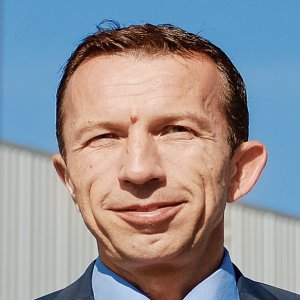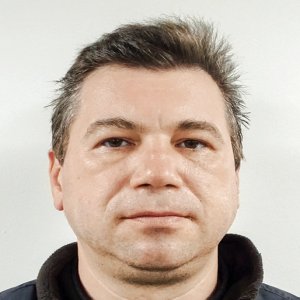Self-Sufficient, Strong Infrastructure for the Industry

Q: How do global economic and exchange rate fluctuations influence FINSA’s long-term planning?
A: Our sector has always been dollar dominated. Practically every lease quote operation is in dollars. This consequently impacts structuring and transactions for the retail and office sector as well as the industrial sector as a whole. In terms of investments, when FINSA collects dollars from US pension funds they expect returns in the same currency. Mexico’s industrial sector has the ability to offer this possibility and we are enthusiastic this trend will continue. Through Mexican, US or private pension funds, FINSA has raised enough capital needed to run its operations. Today, the company has 25 industrial parks spread across the country servicing key locations for Mexican industrial development.
Q: The amount of growth you can achieve as a result of existing customers opening new locations is capped. Is there a rebalancing in FINSA’s growth strategy?
A: About 50 percent of FINSA’s new business opportunities come from existing customers. Due to ongoing referrals, this trend will continue in the near future. As companies grow and diversification continues FINSA’s strategy will be contingent on its performance and track record. We have developed over 100 million ft2 of building space, most of which is thanks to renewed contracts in Mexico.
Because of our diversification efforts, only 43 percent of our portfolio covers automotive companies, down from 60 percent of our clients five years ago. We now have a large margin for continuous growth. The remainder of our business comes from the electronics, metal stamping and logistics sectors.
Q: How do industry dynamics differ between northern and central Mexico, as well as the booming Bajio region?
A: Northern border towns will continue to encourage US companies’ interest in setting up shop in Mexico to enjoy labor and production cost savings. As Mexico becomes more integrated in the investment networks of OEMs, regions like Bajio become more important for the industry. New OEMs in Mexico have attracted a large number of suppliers into the country.
Cities such as Monterrey, on the other hand, see plenty of industry diversification. KIA has channeled large volumes of investment to the city creating a new dynamic. Saltillo and the Ramos Arizpe corridor, home to Chrysler, GM and Freightliner, have done exceptionally well. Tijuana remains the main market on the western coast due to its proximity and solid relationship with California, while Mexicali is close behind. Juarez has now rid itself of the stigma of being a lawless city and is recovering rapidly as a fruitful production base.
Q: How does FINSA evaluate the states in which its clients should set up shop?
A: With such a strong network of industrial parks, building a close relationship with the government to secure sufficient complementary infrastructure is inevitable. Government entities are extremely important. Whether on a local, state or federal level they are key in promoting the location to investors. Communication and cooperation is essential to present the best viable solutions to our clients. We rarely demand the availability of local infrastructure as we can develop our own more freely. FINSA’s industrial expertise permits the company to establish its own water treatment plants and electric substations, for example.
Q: What are the key factors needed for FINSA’s success given increased competition over the last three years?
A: We must offer better and more advanced solutions to our clients. We have the capital to service any type of project, from a simple warehouse facility to sophisticated metal stamping operations. FINSA only takes part in LEED certified product projects and investors welcome this stipulation with open arms. Our newest parks offer an integrated solution for industrial developments, complemented by housing and retail projects.
Q: How does the company generate capitaland how does it expect to spend its funds in the short term?
A: We have a number of international partners that have helped us raise capital. For instance, AIG Global Real Estate was one of FINSA’s main US partners, having invested in the Latin American market through the real estate arm especially in Mexico. GE Capital is another partner that has helped us tremendously. Walton Street Capital, an extremely active real estate fund in the US, is crucial to our operations and retained exclusivity with FINSA in Mexico. Due to the high demand for new products, we have been tapping into additional sources of equity. Real estate is capital-demand intensive to cover both the equity and debt side of the equation. Therefore, FINSA is always working on ways to raise funds and keep bank availability to ensure capital sources needed for market growth.
We make a point of keeping top-notch infrastructure at all times by constantly renewing buildings and roads. Systematic investments to improve our parks are an essential part of our operations.
Q: How would the company organize energy supplies in its multiple industrial parks?
A: Our huge client base demands high electricity volumes. One of our main objectives is finding a source to supply them at a stable and competitive price. There are various groups developing projects involving solar and cogeneration. However, FINSA is still evaluating how it can best offer these solutions while ensuring added benefits to its clients. We have evaluated the possibility of owning power generation infrastructure but have not yet solved the question of distribution. The federal government has adapted Mexico’s structural reforms and we now have a good base for future planning. The country is a sound investment hub and the market has become less dependent on oil and gas. Mexico also proved it can thrive even under the worst circumstances.
Q: What are FINSA’s midterm goals and how would it like to develop for 2020?
A: FINSA measures its success in the Mexican market by combining our own performance with the performance of our clients. We have been successful as a direct result of our clients’ prosperity in Mexico’s manufacturing industry.
We expect FINSA to be much bigger by 2020. We will have a larger number of locations than other industrial real estate developers in the country. Expanding into Central and South America is another project we have planned and we expect to cater to emerging demand in those markets. If we intend to achieve the growth targets that we have set for ourselves, we must move beyond Mexican borders.






















